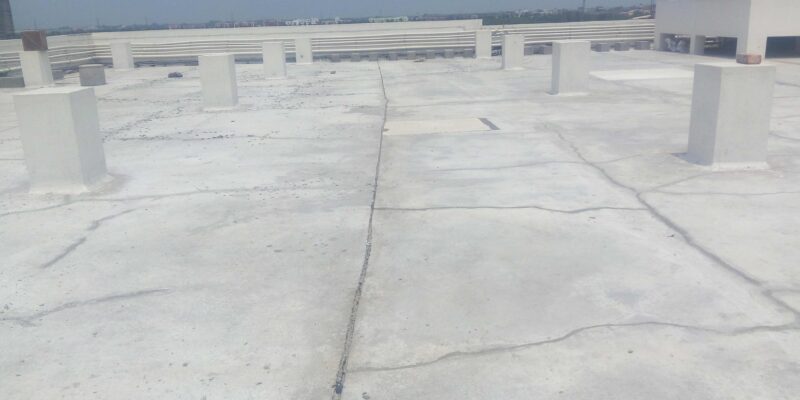Why did we always avoid stepping on cracks in concrete when we were kids? Lovely superstitions!
Just like those superstitions, the cracks in the concrete made no sense to most. How does something
that tough form cracks? There are a number of reasons, but a common one involves freeze and thaw
cycles. Water typically follows the path of least resistance, and if there is the slightest existing crack
in the concrete maybe due to earth movement or a defect like an air bubble between the aggregate
in the concrete, water will find its way in. Under normal circumstances, that would normally not
create a significant issue, but add Winter and freezing temperatures into the equation, and those
cracks and defects will widen and perpetuate the problem as frozen water, aka ice, expands if there
is no intervention.
So, what does this have to do with roofing? Some older roofing systems contain materials, although
typically strong and durable, that become brittle with freezing temperatures and may be susceptible
to fracturing, splitting, and cracking due to building movement, roof traffic, or a drop of a tool. Add a
freeze/thaw cycle to those fractures and cracks, and just like concrete, those defects will continue to
get worse without intervention.
As the season “slowly” changes from Winter to Spring, now is the time to start planning a Spring
Preventative Maintenance Roof Evaluation. Luckily, we haven’t experienced many freezing days this
Winter, but for the ones we did have, it doesn’t take much to make a small issue a large problem.
The team members at Cole Roofing can assist you with identifying potential issues and preventing a
much larger problem.
Call Cole Roofing at 410-242-0600 to discuss what Preventative Maintenance Roof Evaluations can
do for you and schedule your evaluation today!

